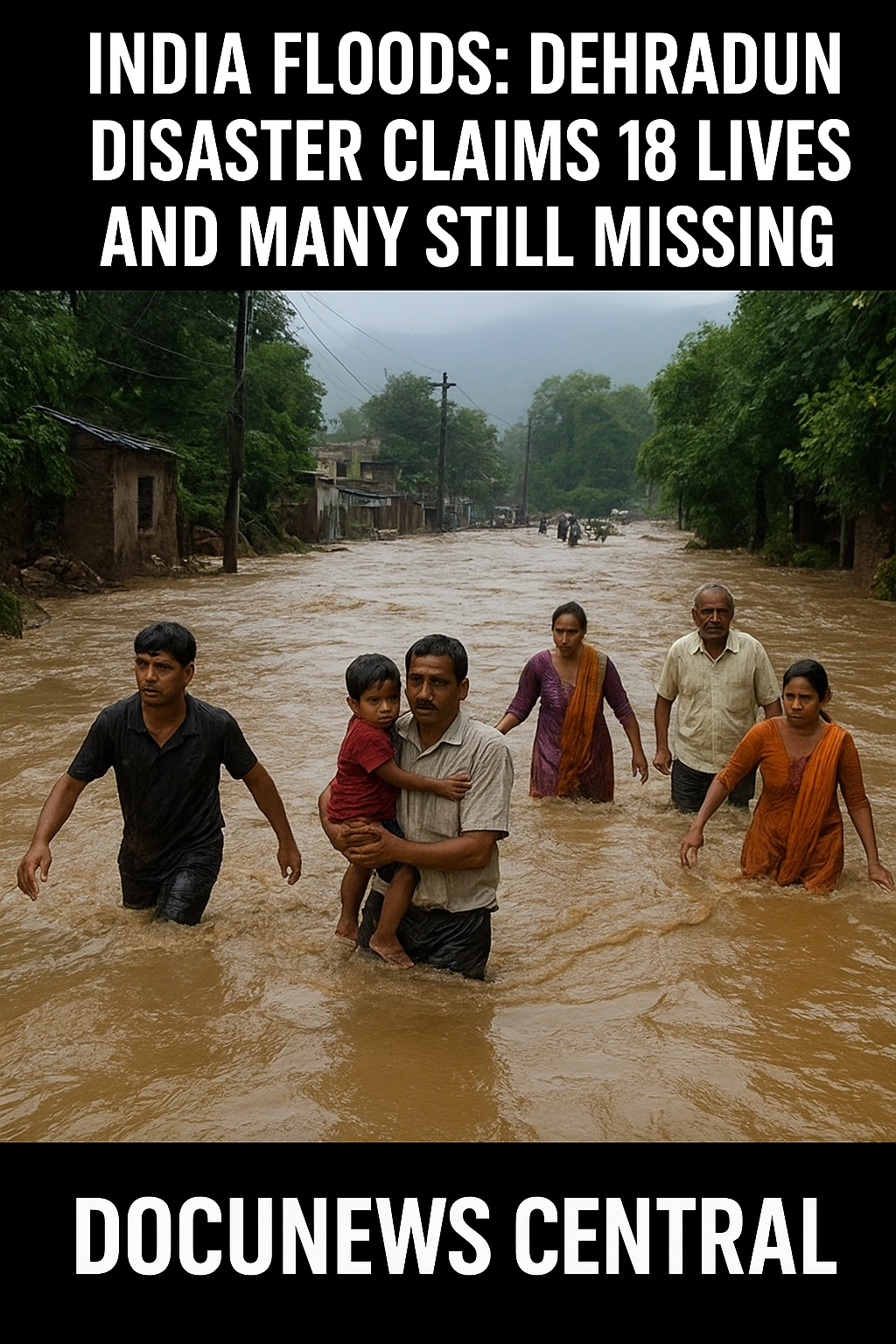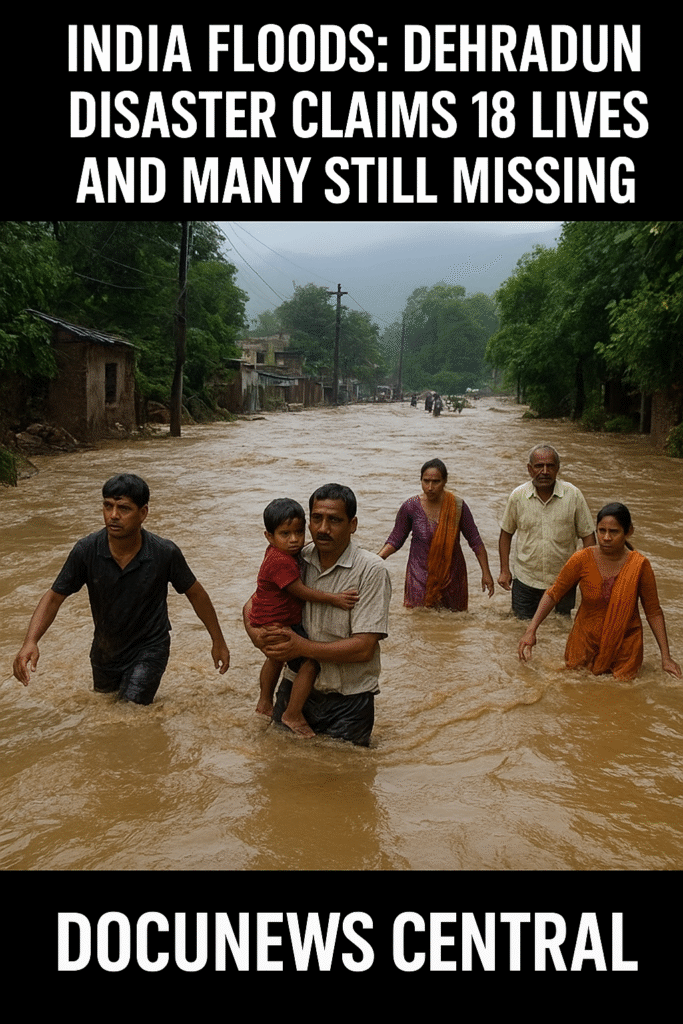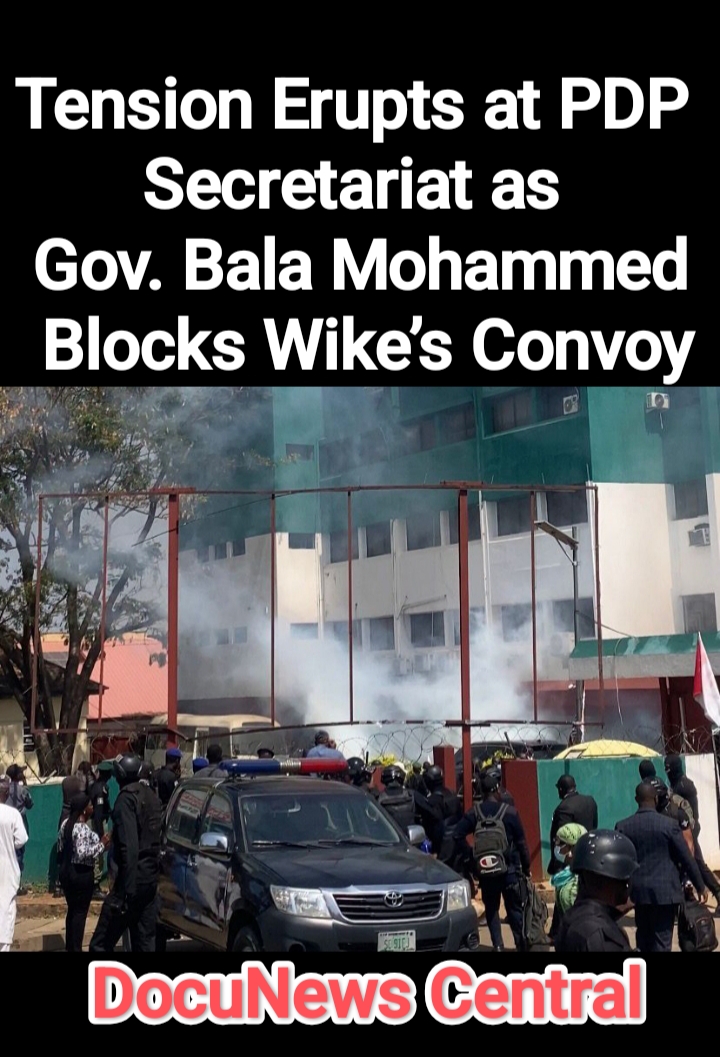

India Floods: Dehradun Disaster Claims 18 Lives and Many Still Missing
Dehradun, India – A heavy rain disaster has shaken the state of Uttarakhand this week. Sudden cloudbursts and intense rainfall caused flash floods and landslides across Dehradun. The deadly event has already claimed 18 confirmed lives, while several others are still missing. The tragedy has left families in shock and rescue teams racing against time.
Early Morning Chaos
The disaster began in the early hours of Monday when dark clouds gathered over the Himalayan foothills. Within a short time, a powerful downpour started. Rivers and streams rose quickly. The water level in many small valleys grew dangerous. People living in low-lying areas had no time to prepare or escape. Houses were swept away as water from the hills rushed down with fierce force.
Witnesses said they heard loud rumbling sounds before they saw water mixed with mud and stones. Many residents grabbed children and elderly relatives and ran to higher ground. Some were trapped inside their homes. Several small bridges collapsed. Roads to remote villages disappeared under landslides.
Rescue Efforts Underway
The State Disaster Response Force (SDRF) and the National Disaster Response Force (NDRF) moved in fast. Teams used boats, ropes, and heavy machines to reach affected zones. Helicopters scanned areas where roads are cut off. Officials confirmed that 18 bodies have been recovered so far. But at least 15 people remain missing. Many injured victims have been taken to hospitals in Dehradun city.
Rescue officers said that constant rain has slowed their work. Mudslides continue to block key roads. The rescue teams are working in dangerous conditions. Despite this, they continue day and night to find survivors. Dogs trained for search operations are helping them. Volunteers from nearby towns have also joined, bringing food and warm clothes for survivors.
Impact on Homes and Roads
More than a hundred houses have been damaged or destroyed. Families who lost homes are staying in school buildings and community halls. Many roads have huge cracks or are covered with debris. Landslides have cut off electricity and water in several rural areas. Government engineers are trying to restore basic services.
Farmers in nearby villages say their fields are under thick layers of silt and stones. Crops for the season are lost. Many animals have died. The damage to farmland could cause food shortages in coming weeks if relief does not arrive quickly.
Government Response and Relief
Uttarakhand Chief Minister Pushkar Singh Dhami visited affected sites and promised quick help. He announced that families of the deceased will receive financial support. The state has opened several relief camps with food, blankets, and clean water.
The central government in New Delhi also offered support. Prime Minister Narendra Modi expressed deep sorrow for the loss of life. He said the nation stands with the people of Uttarakhand. He assured that funds from the National Disaster Relief Fund will be released to help victims rebuild.
Local authorities have set up emergency phone lines. People can call to report missing relatives or request rescue. Medical teams are moving through villages to check for injuries and prevent disease outbreaks.
Warning for Tourists and Pilgrims
Dehradun and nearby hill stations attract thousands of tourists and religious pilgrims. Officials have urged all travelers to postpone visits until the situation improves. Many trekking routes and pilgrimage roads are unsafe. Some visitors are stranded in remote areas. Helicopters are working to bring them to safety.
Hotels and guest houses are giving temporary shelter to people who cannot leave the region. Transport services remain limited. Buses and trains into Dehradun are running on reduced schedules.
Environmental Concerns
Experts have linked the disaster to changing weather patterns in the Himalayan region. Climate scientists say heavier and more frequent rainstorms are now common. Rapid urban growth and deforestation in Uttarakhand have also increased the risk of flash floods.
Environmental groups are calling for stricter building rules in hilly regions. They warn that construction near riverbeds and steep slopes weakens the land. When heavy rain falls, soil becomes unstable and landslides follow.
Several scientists from the Indian Meteorological Department are studying the event. They hope to improve early warning systems so residents can move to safe areas before disaster strikes.
Stories of Courage
Amid the destruction, many acts of bravery have inspired hope. A group of young men formed a human chain to save an elderly couple trapped in rising water. Local women cooked meals for stranded travelers using whatever supplies they could find.
One schoolteacher carried three children to safety through knee-deep mud. He said he only thought of getting them to higher ground before the flood arrived. Such courage has brought comfort to grieving families.
Health and Safety Concerns
Medical experts warn of possible outbreaks of waterborne diseases. Contaminated floodwater can spread infections like cholera and dengue fever. Health workers are distributing clean drinking water and mosquito nets. People are being advised to boil water before drinking and to use disinfectants where possible.
Hospitals in Dehradun have opened special wards to treat injuries and infections. Doctors say most injuries are from debris and landslides. There is also concern for the mental health of survivors, especially children who witnessed the disaster.
Economic Losses
Local businesses are counting heavy losses. Shops and markets were washed away or buried in mud. Road closures mean supply trucks cannot deliver goods. Tourism, a key part of the region’s economy, has stopped for now.
Farmers fear their next harvest will be poor. Many livestock have died. Government officials say it will take months to rebuild roads and restore power. Early estimates suggest damage worth several hundred crore rupees. Insurance companies expect large claims.
National Mourning and Support
Across India, people are sending messages of sympathy. Religious groups and charity organizations are collecting donations. Students and office workers in distant cities have started online fundraisers to help survivors.
Churches, temples, and mosques in other states are holding special prayers. Television and radio stations are airing information on how citizens can contribute. Many celebrities have shared their concern on social media and urged followers to give to relief funds.
Calls for Better Preparedness
The Dehradun floods have renewed debate on disaster planning. Critics argue that warning systems were too slow and that illegal construction in fragile areas worsened the tragedy. They urge stricter zoning laws and better drainage systems.
Experts also recommend regular drills in schools and villages so that people know how to respond when flash floods strike. They say climate change will make such events more frequent and that India must invest in stronger infrastructure.
Looking Ahead
For now, rescue teams continue to search for the missing. Families wait anxiously for news of loved ones. Relief workers hope the rain will ease, allowing them to reach remote villages and deliver supplies.
The people of Dehradun face a long road to recovery. But many believe that the courage and unity shown during the crisis will help the region rebuild. Authorities say they will review construction rules and improve early warning systems to reduce future risks.
A Nation Stands Together
India has seen many natural disasters in recent years. Each time, ordinary citizens have shown remarkable strength. The tragedy in Dehradun is another reminder of the need for preparedness and the power of community support.
As prayers and aid pour in from across the country, the victims’ families know they are not alone. The nation mourns the lost lives and stands ready to help the survivors rebuild their homes and their future.
This report is based on the latest updates from state authorities and rescue teams as of this week. This is DocuNews Central Reporting.






